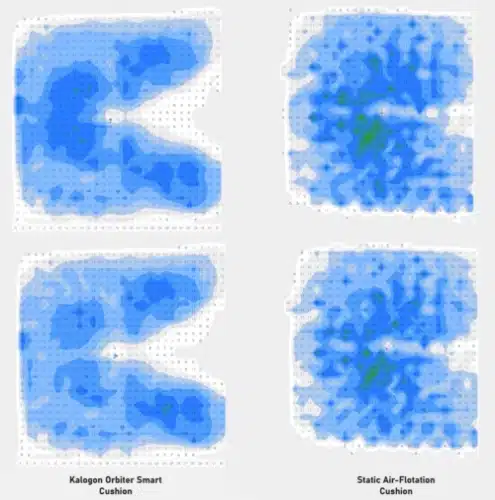Kalogon has introduced a smart cushion wheelchair that has a basic machine learning algorithm that prevents any one part of the body from being compressed due to prolonged use of a wheelchair

Regular use of a wheelchair may have the risk of incurring injury from poor circulation. This pressure injury is caused when a sufficient amount of blood is not able to reach that part of the body and hence, the tissue starts to die. Pressure injuries affect millions and lead to the deaths of thousands of people every year. To overcome this prevailing problem, Kalogon came up with a solution called the Orbiter, a cushion that has five distinct regions, corresponding to the tailbone and left and right thigh and butt areas generally. By keeping four of the five inflated, the user is supported adequately and a whole area is relieved of pressure. Then a few minutes later it slowly shifts that pressure to the next region, and so on. When the cushion deflates the rear center area, pressure is diverted to the front, allowing better blood flow to the sacral area.
“When you sit down on it, we have a basic machine learning algorithm that at its default settings does its best to accommodate your body, but you can customize it to fit,” Balz said, Kalogon founder and CEO, either using a companion app or with the help of a caregiver or clinician. After setting its normal sequence, the cushion also monitors pressure on the different regions so it can shift differently if the user is leaning forward or to the side for longer than usual (typing, for instance, or dozing).
The whole cushion device is powered by a battery and pump unit that clips to the wheelchair, and has enough power built in to last for 14-16 hours at default settings (redistributing weight every three minutes). This Orbiter is the enhanced version of semi-smart cushions. One said it allowed him to sit in his chair without discomfort for four hours, which he hadn’t done in years. The cushion pressure can be adjusted using Kalogon’s app on our smartphone.
“By having five independently controllable cells, we can move one at a time and tune that movement — support the body but drop down one of the cells. If you look at a pressure map, you’ll see that the pressure drops below the commonly accepted threshold,” Balz continued.
The people who have used Orbiter say that it achieves a similar effect to offloading, which everyone agrees is a good practice.








